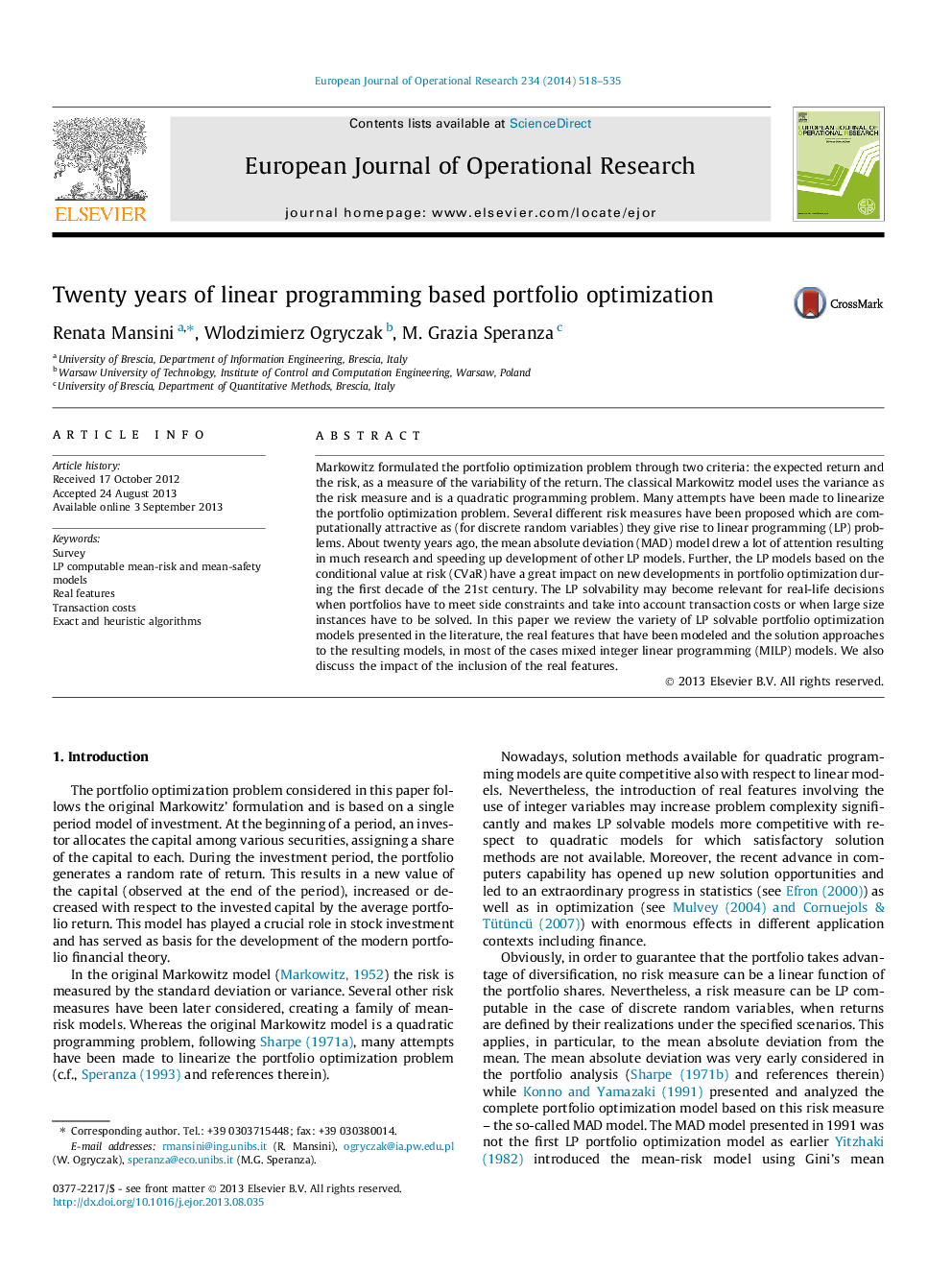| Article ID | Journal | Published Year | Pages | File Type |
|---|---|---|---|---|
| 479828 | European Journal of Operational Research | 2014 | 18 Pages |
•Survey of LP computable mean-risk and mean-safety models for portfolio optimization.•Portfolio selection with real features.•Transaction costs, minimum lots, investment thresholds and cardinality constraint.•Exact and heuristic solution approaches.
Markowitz formulated the portfolio optimization problem through two criteria: the expected return and the risk, as a measure of the variability of the return. The classical Markowitz model uses the variance as the risk measure and is a quadratic programming problem. Many attempts have been made to linearize the portfolio optimization problem. Several different risk measures have been proposed which are computationally attractive as (for discrete random variables) they give rise to linear programming (LP) problems. About twenty years ago, the mean absolute deviation (MAD) model drew a lot of attention resulting in much research and speeding up development of other LP models. Further, the LP models based on the conditional value at risk (CVaR) have a great impact on new developments in portfolio optimization during the first decade of the 21st century. The LP solvability may become relevant for real-life decisions when portfolios have to meet side constraints and take into account transaction costs or when large size instances have to be solved. In this paper we review the variety of LP solvable portfolio optimization models presented in the literature, the real features that have been modeled and the solution approaches to the resulting models, in most of the cases mixed integer linear programming (MILP) models. We also discuss the impact of the inclusion of the real features.
